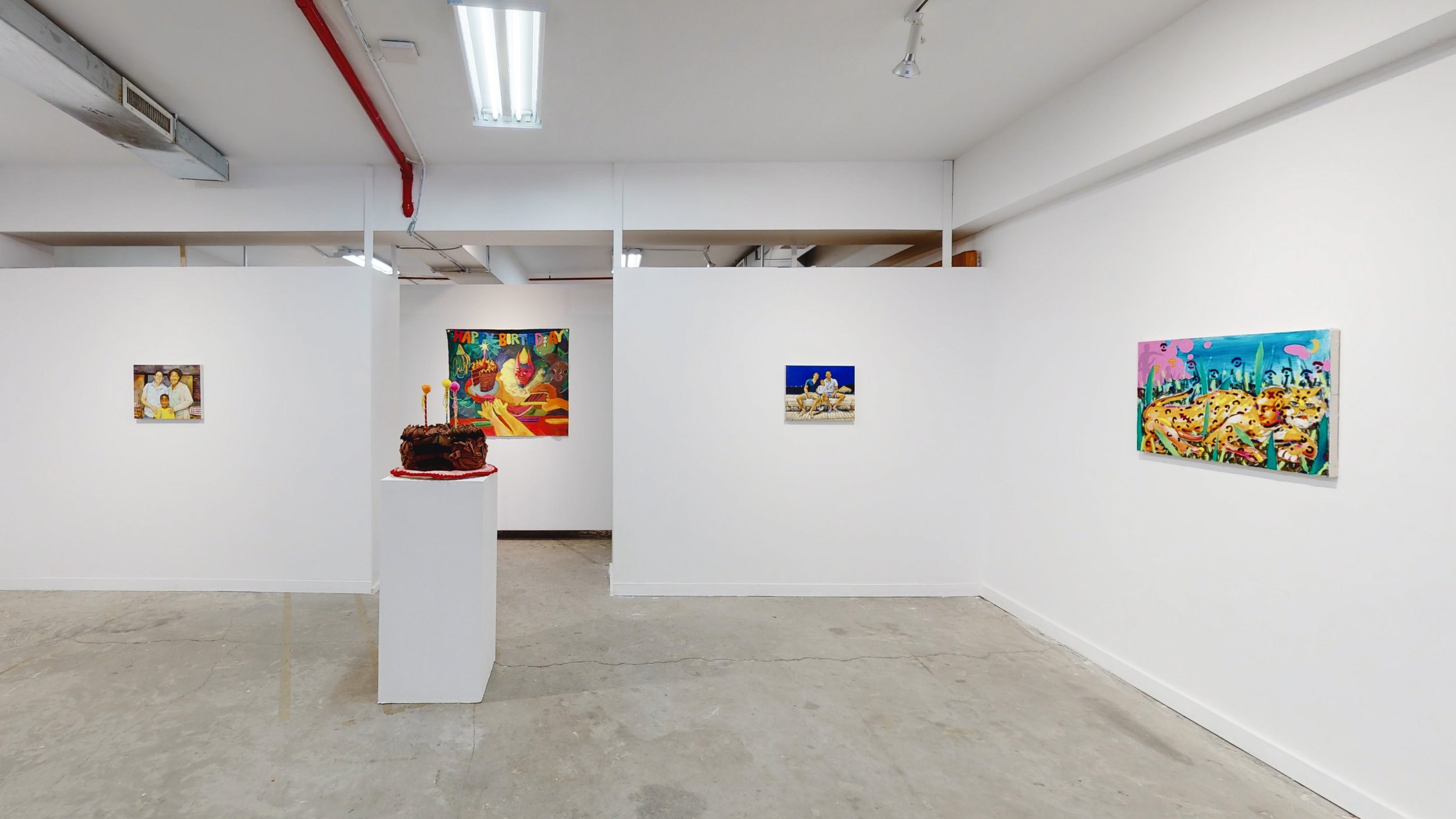323: QUE(e)RY
New York, N.Y. – LatchKey Gallery is proud to present, QUE(e)RY a group exhibition bringing together seven, queer, male identifying artists working in various mediums. The exhibition seeks to empower each participating artist to question, challenge, and/or embrace their notion of masculinity. Looking at traits of maleness and identity through the lens of gender performance, societal expectation, and stereotype, each artist utilizes their unique practices, personal histories, and experiences to open spaces for discussion, critique, and reconsideration of gender. QUE(e)RY features artworks by Paul Anagnostopoulos, Damien Davis, Ben Eden, Daniel Morowitz, Cupid Ojala, Albert Peguero, and Borris Torres. QUE(e)RY will be on view at 323 Canal Street, from October 28 to December 18, 2021 with an artist reception on Friday, November 5 from 6-8pm
Damien Davis’ and Albert Peguero’s works deconstruct the visual language of cultural objects, architecture, and design. In both their processes they use screws and hardware to assemble their pieces, alluding to the traditionally masculine labor of construction. Davis’ work investigates how societies code and decode Blackness and masculinity. His 3D wall sculptures feature lexicons of shapes and symbols juxtaposed to show imagery that is personal, anthropological, and stereotypical, drawing the viewer in through recognition and pushing them to consider their own complex relationships to each object. For QUE(e)RY, Davis will show a grouping of trophies that are referential to Ballroom “best in category” trophies.
Peguero’s abstract sculptures investigate typical architecture and household items to breakdown narratives of heteronormativity in everyday life and create conversations around the shared experiences of working-class immigrants in the U.S. Shifting aspects of rigidity found in the objects he transforms, Peguero’s sculptures emasculate the objects they represent by stripping away all identifying Presidente and Goya labels and transforming the object through form or material. The tension between old and new, utilitarian, and decorative, feminine, and masculine flow through his intimate ceramics and large-scale sculptures, freeing the viewer of imposed expectations of the object.
Ben Eden and Daniel Morowitz utilize folk techniques and mythology to rewrite and/or establish personal histories and queer narratives. Eden’s paintings embrace both masculine and feminine elements through visual symbolism and through materiality and process. Utilizing a painting style that alludes to folk and incorporating elements of craft, his paintings conjure themes of fantasy and disguise. With particular emphasis on celebration and birthday parties, the subject matter of Eden’s works is informed by his own experiences as a trans-man, and the loaded implications surrounding birthdays.
Daniel Morowitz creates surrealist paintings using color, animal hybridity, and queer narratives to rewrite and establish new histories and mythologies. Mixing objects, figures and gestures, his works are steeped in double- entendre, and redefine the boundaries of sexuality, violence, and playfulness. Patterning and animal imagery construct his figures, establishing a base in mythological motif, while referencing queer culture’s draw to colorful expression.
The presentation of the male body is central to the work of Paul Anagnostopoulos and Cupid Ojala. In Anagnostopoulos paintings, the male figure serves as an access point to the discussion of masculinity. The men depicted are often shown in the style of traditional Greek busts: the epitome of Western power and beauty. Anagnostopoulos challenges the depictions of strength and power by inserting emotion and sensitivity to the canvas. The use of color and landscape depicting color, flora, and celestial imagery creates a dramatic complexity of the otherwise brut figures.
Ojala’s works evoke new ways in seeing the masculine body through the lens of a queer trans-man. He explores non-conformity in a binary world by drawing hypermasculine bodies, outlined only by hair. The corporeal abstractions go beyond defining masculinity and instead re-embodies cultural signals of gender and explorations of desire.
Boris Torres’ works discuss the presentation of gender roles through family and representation. Torres’ detailed paintings celebrate queer culture through photo-realistic family paintings of same sex couples with their children. His works not only create space for representation but disrupt the “traditional” visual narrative of what a modern family looks like. The paintings on view showcase people Torres knows personally and depict familial narratives that are joyful and filled with love.
QUE(e)RY, looks to challenge the viewer, to take a closer look in order to reinterpret and redefine the contemporary ideas of masculinity.
ARTISTS
LatchKey Gallery | 173 Henry Street | info@latchkeygallery.com | 646.213.9070



















